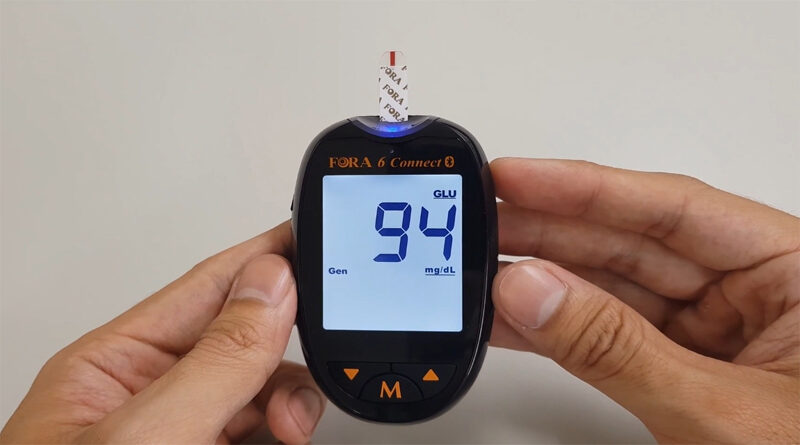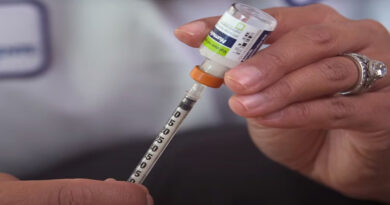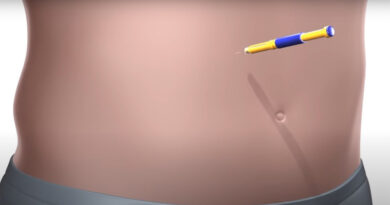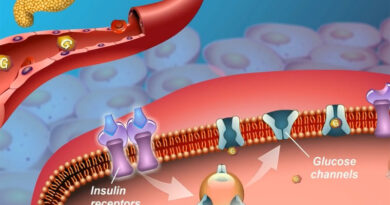Diabetes: (Blood Sugar)
Last Update on September 19, 2022
| Types of Diabetes | Symptoms | Causes | Risk Factors | Tests | Prevention | Treatments |
Diabetes (Blood sugar) is a long-term (chronic) disease that impacts how your body converts food into energy. The majority of the food you eat is turned by your body into sugar (glucose), which is released into your bloodstream. Your pancreas releases insulin to control the sugar when your blood sugar levels increased. Insulin functions like a key in order for blood sugar to enter your body’s cells and where be used as energy.
When you have diabetes, your body usually produces insufficient insulin or uses it improperly. Too much blood sugar level remains in your bloodstream when there is deficient insulin produced by the pancreas.
Each type of diabetes (blood sugar) has a different basic cause to develop in your blood. However, diabetes can result in an excess sugar level in your blood. Serious health complications might result from having too much sugar in the blood.
Diabetes (Blood sugar) which increases high blood sugar levels left untreated can be harmful to your kidneys, nerves, eyes, and other organs. However, you can protect your health by learning about diabetes and taking measures to prevent or control it.
1. Types of Diabetes (Blood Sugar):
Diabetes can be classified into three types: type 1, type 2, and gestational diabetes (diabetes while pregnant).
1.1. Type 1 Diabetes:
Diabetes type 1 is an autoimmune disorder. The autoimmune system attack and kills cells in the pancreas which are producing insulin.
It is believed that an autoimmune reaction is the cause of type 1 diabetes. Autoimmune reactions stop the production of insulin. Type 1 diabetes affects between 5–10% of those who have the disease. Type 1 diabetes symptoms frequently appear suddenly. Typically, it develops in kids, teenagers, and young adults. If you have type 1 diabetes, it is necessary to must take insulin every day to stay alive. There is currently no permanent treatment for type 1 diabetes.
1.2. Type 2 Diabetes:
Your body fails to normally utilize insulin in type 2 diabetes, making it disturbing to maintain normal blood sugar levels. The majority of diabetics (90–95%) are type 2. Type 2 takes years to develop, and adults are typically affected by it. If you are at risk, it is essential to test your blood sugar level because you might not show or feel any symptoms. Type 2 diabetes can be avoided or postponed by adopting healthy lifestyle adjustments like these:
- Losing weight.
- Eating healthy food.
- Being active.
1.3. Gestational Diabetes:
Women who have never had diabetes before and who become pregnant can develop gestational diabetes. This type of diabetes is put on by hormones the placenta secretes that block insulin. If you have gestational diabetes, your unborn child may be more at risk for health issues. After your delivery, gestational diabetes normally disappears. However, it increases the chance of developing type 2 diabetes in later life. Your child has a higher chance of developing type 2 diabetes as a youngster or adolescent.
2. Symptoms of diabetes (Blood Sugar):
The start of diabetes is associated with blood sugar increases.
The intensity of diabetes symptoms is affected by blood sugar levels. Some people may not show symptoms and signs, particularly if they have type 2 diabetes or prediabetes. Symptoms of type 1 diabetes commonly show suddenly and are more severe.
Type 1 diabetes and type 2 diabetes can both lead to the following symptoms:
- Noticing a greater than normal thirst
- Repeated urination
- Weight loss without exerting effort
- Ketones are present in the urine. When insufficient insulin is available in the body, muscle, and fat are broken down. It produces ketones as a consequence.
- Becoming worn out and fragile
- Irritated or experiencing other mood swings
- Having visual problems
- Having wounds that get a long time period to heal
- Getting several infections like vaginal, skin, and mouth infections
Diabetes type 1 can develop at any age. However, it frequently begins in childhood or adulthood. The more prevalent kind of diabetes, type 2, can emerge at any age. People over 40 years old have more chance to get type 2 diabetes.
2.1. Symptoms of Type 1 Diabetes:
Type 1 diabetes symptoms can include:
- Extreme hunger
- Increased thirst
- Unintentional weight loss
- Frequent urination
- Blurry vision
- Tiredness
- Nausea
- Vomiting
- Stomach pains
2.2. Symptoms of Type 2 Diabetes:
Type 2 diabetes symptoms can include:
- Increased hunger
- Increased thirst
- Increased urination
- Blurry vision
- Tiredness
- Sores that are slow to heal
2.3. Symptoms of Gestational Diabetes:
Pregnancy-related diabetes, or gestational diabetes, commonly no shows any symptoms. Between 24 and 28 weeks after pregnancy, your doctor should advise you to test for gestational diabetes. You can adjust as necessary to protect both your health and that of your child.
3. Causes of diabetes (Blood Sugar):
Each type of diabetes has a unique set of reasons.
3.1. Causes of Type 1 diabetes:
According to medical experts, Type 1 diabetes has an unknown specific cause of development. The immune system wrongly attacks and kills beta cells in the pancreas which produce insulin.
Some people may be affected by their genes. Additionally, a virus may activate the immune system to attack cells in the pancreas.
3.2. Causes of Type 2 diabetes:
The cause of type 2 diabetes is a result of both environmental and genetic factors. Your risk is further increased if you are overweight or obese, and your chances of getting type 2 diabetes increase. The effects of insulin on your blood sugar are more limited by your cells when you are overweight, particularly in the abdomen.
Families are prone to this condition. Family members have genes that increase their risk of type 2 diabetes and being overweight.
3.3. Causes of Gestational diabetes:
Hormonal changing during pregnancy is the major cause of developing gestational diabetes in the bloodstream. The placenta releases hormones that make a pregnant woman’s cells less responsive to the effects of insulin.
People who are overweight before becoming pregnant or who gain much weight while pregnant have more chance of developing gestational diabetes.
4. Diabetes Risk Factors:
Every type of diabetes (blood sugar) has different risk factors.
4.1. Risk Factors of Type 1 Diabetes (Blood Sugar):
An immunological response is assumed to be the cause of type 1 diabetes (the body attacks itself by mistake). Compared to pre-diabetes and type 2 diabetes, type 1 diabetes risk factors are less well understood. Known risk elements consist of:
- Having a parent, sibling, or other family members with type 1 diabetes?
- Age: Type 1 diabetes can occur at any age, but it most frequently strikes kids, teenagers, or young adults.
- In the US, White persons have a higher risk of type 1 diabetes than African Americans, Hispanics, and Latinos.
- There is currently no treatment available for type 1 diabetes.
4.2. Risk Factors of Type 2 Diabetes:
If you have any of the following terms, you have more chance of getting:
- Possess pre-diabetes
- Being overweight
- Are you at least 45 years old?
- Family medical history of brother, sister, or parent who has type 2 diabetes.
- Are inactive more than 3 times every week?
- She either had a baby that weighed more than 9 pounds at birth or gestational diabetes.
- Is Native to Alaska, Hispanic or Latino, African American, or American Indian? Additionally more sensitive are some Pacific Islanders and Asian Americans.
- If you have non-alcoholic liver problems, you may also be at risk for developing type 2 diabetes.
With tested lifestyle adjustments, type 2 diabetes can be avoided or delayed. These include consuming a nutritious diet, exercising frequently, and decreasing weight if you’re overweight.
4.3. Risk Factors of Prediabetes:
If you have any of the following, you have more chance of getting:
- Being overweight
- Are you at least 45 years old?
- Family medical history of brother, sister, or parent who has type 2 diabetes.
- Are inactive more than 3 times every week?
- She either had a baby that weighed more than 9 pounds at birth or gestational diabetes.
- Are Native to Alaska, Hispanic or Latino, African American, or American Indian? Some Asian Americans and Pacific Islanders are likewise more vulnerable.
With tested lifestyle adjustments, prediabetes can be avoided or reversed. These include eating a nutritious diet, getting regular exercise, and losing weight if you’re overweight. You can make wholesome changes that have long-lasting effects with the assistance of the CDC-led National Diabetes Prevention Program.
4.4. Risk Factors of Gestational Diabetes:
Gestational diabetes (diabetes when pregnant) is a possibility if you:
- Had gestational diabetes before becoming pregnant.
- Have delivered a baby that weighed more than 9 pounds.
- Being overweight
- Are you over the age of 25?
- Medical history of your family members who have type 2 diabetes.
- Possess the hormone condition polycystic ovarian syndrome (PCOS).
- Are you an American Indian, Alaska Native, Native Hawaiian, or Pacific Islander?
- Are they African American?
After giving delivery, gestational diabetes typically disappears, but it raises your risk for type 2 diabetes. Your infant has a higher risk of being obese as a kid or adolescent and of developing type 2 diabetes in the future.
You might be able to stop gestational diabetes before becoming pregnant by making lifestyle adjustments.
5. Diabetes Tests:
To determine whether you have type 1, type 2, or gestational diabetes, you must get your blood sugar tested. Results of testing are typically readily available and simple. The list of tests is here:
- A1C Test
- Fasting Blood Sugar Test
- Glucose Tolerance Test
- Random Blood Sugar Test
- Glucose Screening Test
- Glucose Tolerance Test
6. Diabetes prevention:
Because type 1 diabetes is an immune system disorder, it cannot be prevented. You also have no control over some type 2 diabetes causes, such as your genes or age.
However, many more diabetes risk factors are controllable. The majority of diabetes prevention techniques include making small changes to your diet and exercising regularly.
Here are some steps you may take to put off developing type 2 diabetes if you have been diagnosed with prediabetes:
- Get at least 150 minutes of cardiac exercise every week by walking or cycling.
- Tran’s fats, saturated fats, and refined carbs should all be cut out of your diet.
- Consume more whole grains, fruits, and vegetables.
- Consume smaller amounts.
- If you are overweight or obese, try to shed 5% to 7% of your body weight.
There are more means of avoiding diabetes than these. Learn more about the methods that could prevent this ongoing medical condition.
Some types of diabetes, such as type 1, are put on by external sources. Others, like type 2, can be avoided by improving dietary habits, upping physical activity, and decreasing weight.
Talk to your doctor about the risks associated with diabetes. If you are at risk, get your blood sugar checked, and then control your blood sugar in accordance with your doctor’s instructions.
7. Diabetes (Blood Sugar) Treatments:
You can manage and treat your diabetes with a variety of treatments. Because each person is unique, the type of treatment you receive will depend on your needs.
Insulin: To control their blood glucose (sugar) levels, all individuals with type 1 diabetes and some individuals with type 2 diabetes must take insulin.
It doesn’t indicate that you have type 1 diabetes if you have type 2 diabetes and your medical team advises that you start taking insulin. Although you still have type 2, your medical care has changed.
It’s common for type 2 diabetics to require insulin therapy at some point, but it doesn’t necessarily mean your diabetes has been poorly controlled. Simply said, insulin is a different type of drug that can support your continued good health.
7.1. Treatments of Type 1 diabetes:
Type 1 can be treated with the following options:
7.1.1. Insulin pumps:
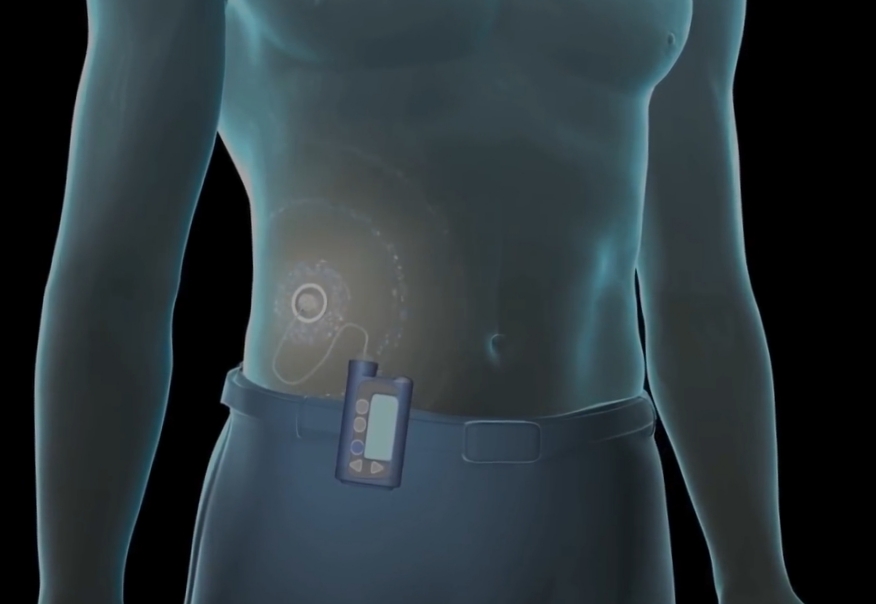
An effective option for injecting with an insulin pen is the use of an insulin pump. You may have more freedom to manage your diabetes as a result.
7.1.2. Islet cell transplant:
An islet cell transplant may be an option if you have Type 1 diabetes. This might prevent you from having severe hypos.
7.2. Treatments for Type 2 diabetes:
Type 1 can be treated with the following options:
7.2.1. Tablets and medication:
To control your blood sugar levels of type 2 diabetes, you may need medication. Metformin is the most popular tablet, however, there are several others as well.
Sulphonylureas, for example, stimulate the pancreas to produce insulin. If you need to, your doctor may prescribe additional medications to aid with weight loss.
7.2.2. Weight loss surgery:
You can receive a variety of overweight surgery operations to the stomach or intestine to aid in weight loss. Numerous studies have revealed that this can assist in putting Type 2 diabetes into remission.
7.2.3. Diet and exercise:
Most recent research has even shown that losing weight can put Type 2 diabetes into recovery. Many people with Type 2 diabetes choose not to take any medication and instead choose to control their diabetes by eating healthy and moving more. We have a tonne of knowledge and suggestions that can assist you in leading a healthy life.
7.2.4. Insulin:
It’s possible that you won’t need to use insulin right immediately if you have type 2 diabetes. However, some persons have extremely high blood sugar levels at the time of their initial diagnosis. Short-term insulin therapy can help you swiftly lower your blood sugar levels.

For a specific cause, such as during pregnancy, a serious sickness, or after surgery, some people may need to take insulin. But if other medications haven’t worked to control your blood sugar levels or aren’t right for you, you could also need to start taking insulin.

